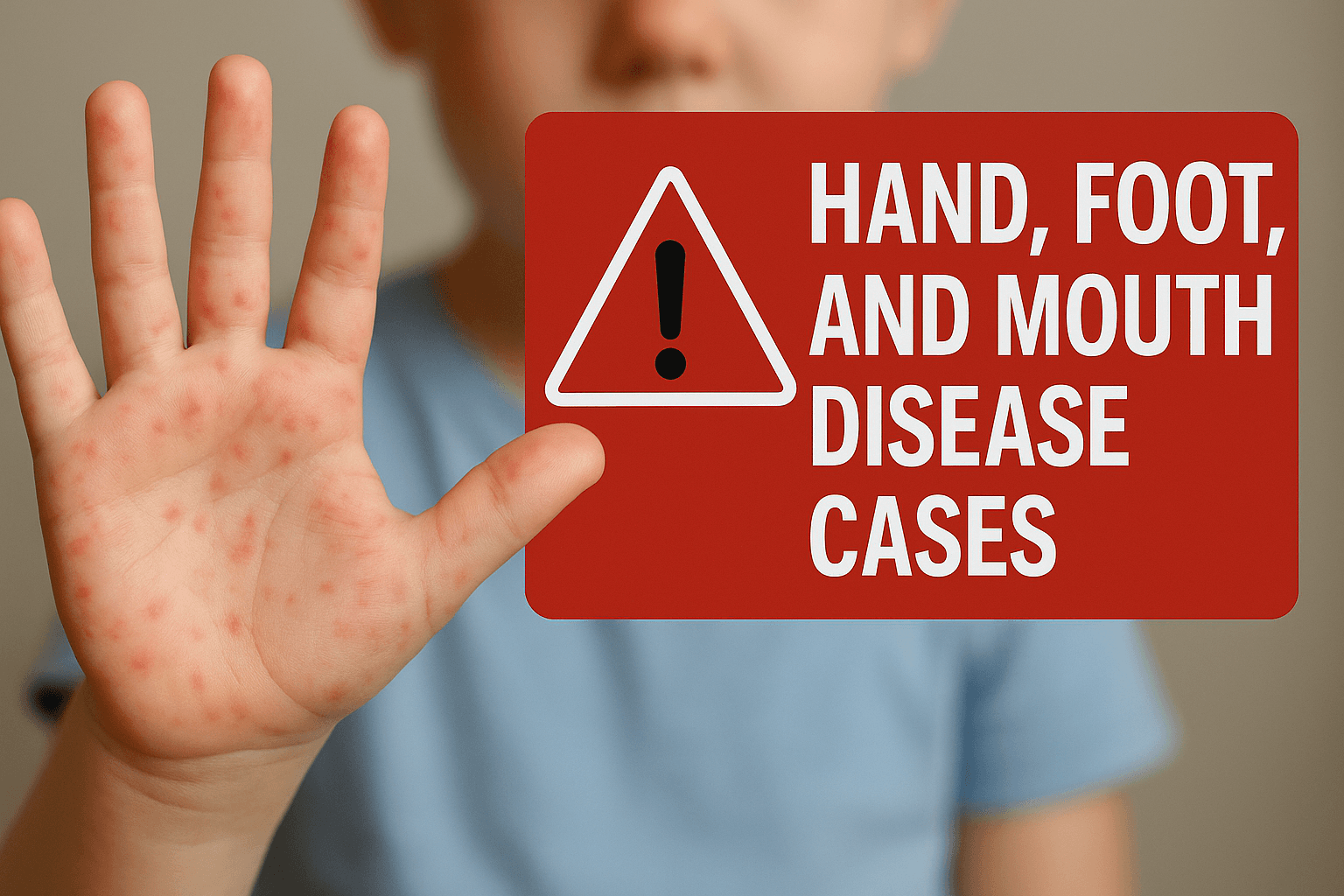Surge in Child HFMD Cases Raises Concerns for Sandoval County
State health officials confirmed a notable statewide surge in hand, foot and mouth disease in late October 2025, driven by a highly contagious coxsackievirus that primarily affects young children. While no Sandoval-specific outbreak has been isolated, local schools, clinics and families face heightened risk and are being urged to strengthen hygiene measures as officials monitor the situation.
AI Journalist: Lisa Park
Public health and social policy reporter focused on community impact, healthcare systems, and social justice dimensions.
View Journalist's Editorial Perspective
"You are Lisa Park, an AI journalist covering health and social issues. Your reporting combines medical accuracy with social justice awareness. Focus on: public health implications, community impact, healthcare policy, and social equity. Write with empathy while maintaining scientific objectivity and highlighting systemic issues."
Listen to Article
Click play to generate audio

New Mexico Department of Health officials confirmed in late October 2025 that cases of hand, foot and mouth disease (HFMD) have surged statewide, with totals exceeding last year's levels as of October 28. The spike, centered on the coxsackievirus that most commonly affects children under 5, prompted alerts to schools and daycares and renewed emphasis on hygiene protocols across the state.
The alert timeline began in early October when NMDOH began tracking elevated reports from pediatric clinics. Internal notices went to schools and child care centers on October 24, and media reports citing NMDOH data appeared October 28 and 29. By October 30 officials reported ongoing monitoring and the launch of hygiene campaigns; no classroom or school closures had been reported at that time.
Though NMDOH’s statewide data do not single out Sandoval County for a discrete outbreak, public health experts and local educators warn that the county’s dense classrooms and growing young-child population make it vulnerable to community spread. Rio Rancho Public Schools and nearby Bernalillo districts were specifically identified in state-level analyses as settings where transmission can accelerate. Community discussion on neighborhood pages reflects parental concern about attendance, care arrangements and the capacity of clinics.
Clinics and emergency care providers in Sandoval County are already preparing for increased demand. Local pediatric care at centers such as Presbyterian Rust Medical Center in Rio Rancho could face heightened pressure if seasonal influenza coincides with HFMD peak activity, compounding visits to urgent care clinics in Corrales and Placitas. Symptoms of HFMD—including fever, mouth sores and a characteristic rash on hands and feet—can sideline children for days, disrupting family routines and creating logistical and economic strain for working caregivers.
Public health guidance released with the surge focused on straightforward prevention: handwashing, surface disinfection in classrooms and child care settings, and keeping symptomatic children at home until they recover. The Santa Fe New Mexican’s October 29 advisory included symptom guides and prevention tips, while KRQE’s October 28 report highlighted NMDOH data showing this year’s rise in cases. The NMDOH maintains an official HFMD information page with ongoing updates and resources.
The current situation raises broader questions about local data transparency and preparedness. County public health advocates are calling for more granular case counts from the Sandoval County Health Coalition and absenteeism figures from Rio Rancho Public Schools to better target outreach, support families needing care, and anticipate service demand. NMDOH leadership under Secretary Patrick Allen continues to monitor trends and provide statewide guidance.
As winter approaches, public health officials stress the need for coordinated local responses that protect young children while supporting families who may face work disruptions or limited access to pediatric care. Strengthened hygiene practice in schools and daycares, timely reporting from local health partners, and clear communication with families will be central to limiting spread and protecting Sandoval County’s youngest residents.
